Traditional and Modern Korean Breakfast: Recommended Breakfast Restaurants for a Cultural Morning Experience
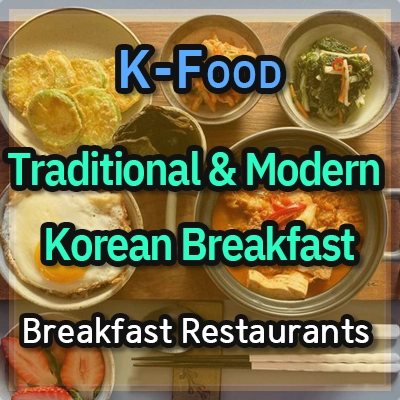
Hello, everyone! Are you curious about Korean breakfast? Korean breakfast is quite different from Western meals. It’s diverse and incredibly delicious. So, let’s dive into the world of Korean breakfast.
Characteristics of Korean Breakfast
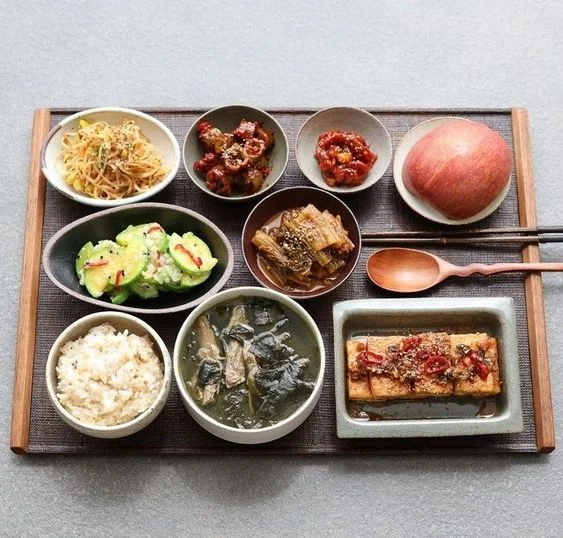
One of the most famous breakfast options in Korea is the ‘Hanjeongsik.’ Hanjeongsik is a traditional Korean breakfast that includes various side dishes, rice, and soup. It’s filled with fresh vegetables, kimchi, grilled meat, eggs, and fragrant broth. It’s a well-balanced meal designed for you to enjoy without any burden, providing various nutrients.
In today’s fast-paced modern society, it’s challenging for Koreans to have such elaborate breakfast regularly. Generally, only those living with their parents or people who highly value breakfast maintain this traditional breakfast habit.
5 Korean Breakfast Menus and Recommended Breakfast Restaurants
1. Light Hanjeongsik
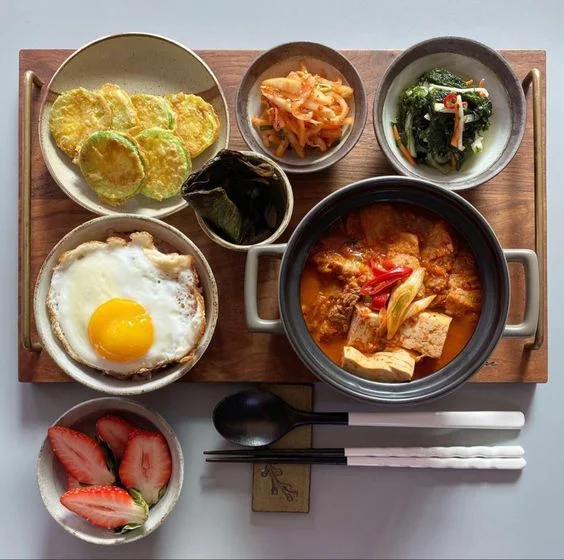
If you’re looking for a traditional yet lighter Korean breakfast experience, a ‘Light Hanjeongsik’ is a perfect choice. It typically includes fewer side dishes, making it easier on the stomach in the morning. In Korea, a light Korean set meal is often referred to as ‘백반’ (baekban). If you’d like to try a light Korean set meal, you can look for restaurants with ‘백반’ in their name.
One highly recommended ‘백반’ restaurant is ‘Samsam Ttukbaegi,’ located in Hyehwa-dong, Jongno-gu, Seoul. They open early, at 6 AM, making it a convenient spot for an early morning visit. Whether you choose the pork bulgogi ttukbaegi, beef seaweed soup, fish set meal, or mackerel jjorim, every item on their menu is a delicious light Korean set meal. Since this place is a hidden gem that many foreigners might not be familiar with, I recommend learning some basic Korean phrases for ordering before you visit!
📍Samsam Ttukbaegi (삼삼뚝배기)
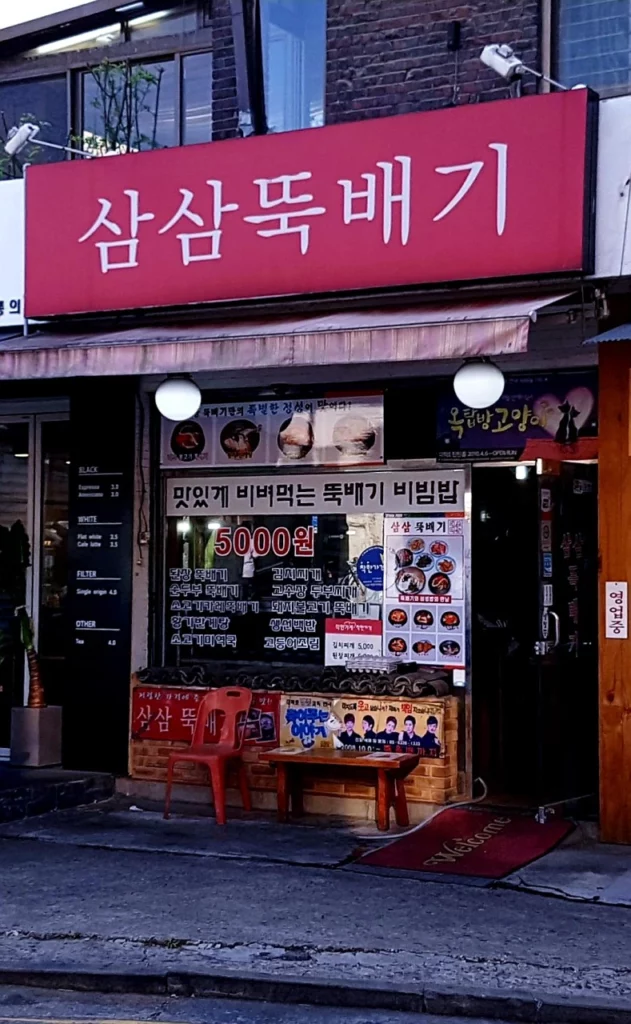
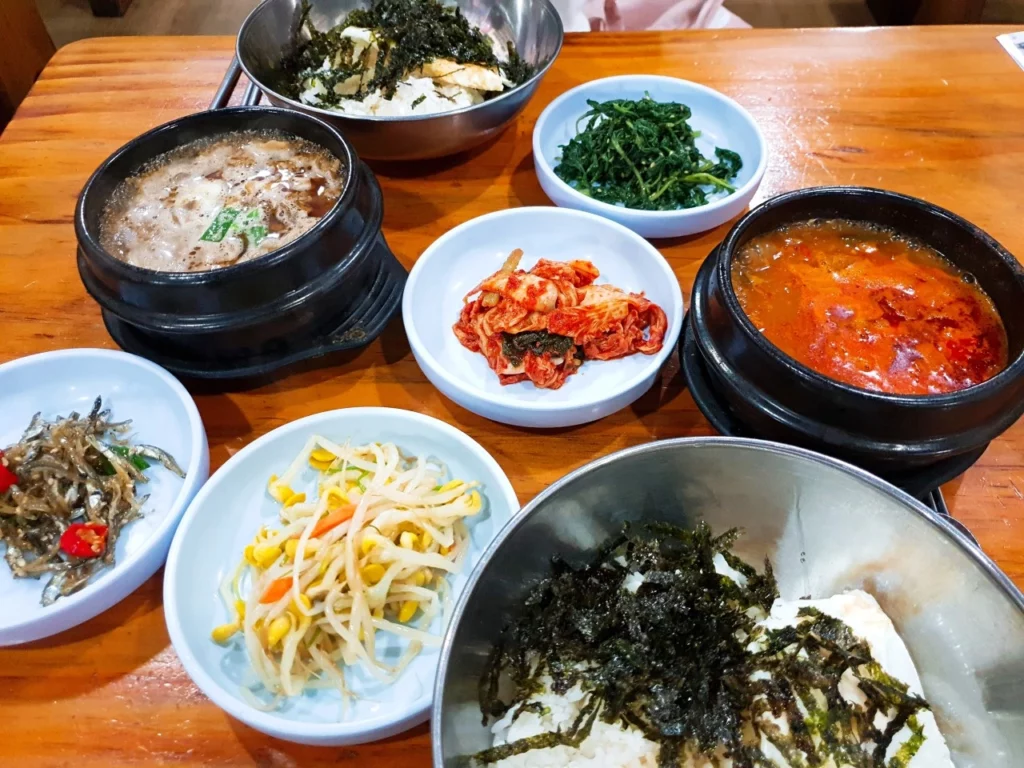
◆ Location and Operating Hours
🚩 Address: 51, Dongsung-gil, Jongno-gu, Seoul, Republic of Korea (Go to Google map)
⏰ Operating Hours: Everyday 06:00 ~ 21:00
🤑 Price
- Pork Bulgogi Ttukbaegi: 6,500 KRW
- Beef Seaweed Soup: 6,500 KRW
- Fish Set Meal: 7,000 KRW
- Soft Tofu Ttukbaegi: 6,500 KRW
- Beef Curry Ttukbaegi: 5,500 KRW
- Spicy Bean Paste Stew: 6,500 KRW
- Mackerel Stew: 7,000 KRW
- Hwanggi Bangyedok: 7,000 KRW
- Sagol Gomtang (Beef Bone Soup): 7,000 KRW
- Kimchi Stew: 6,500 KRW
- Doenjang Ttukbaegi: 6,500 KRW
2. Misutgaru (Korean Multi-Grain Porridge)
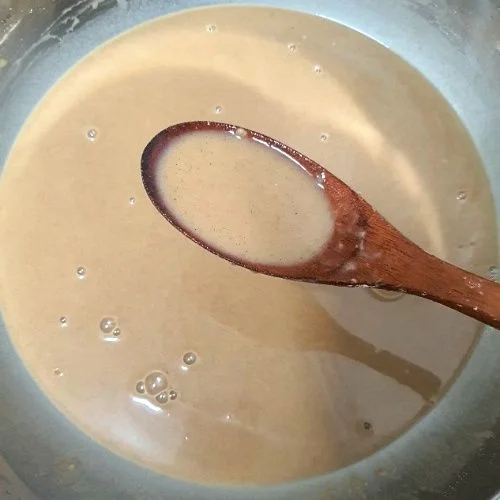
Misutgaru (미숫가루) is a healthy and nutritious breakfast alternative. In today’s busy life, many Koreans opt for a light morning meal, and Misutgaru is a go-to option. It’s a beverage made from various grain powders mixed with milk or water. To enhance the flavor, honey or sugar is added.
You can find Misutgaru in various cafes throughout Korea, often listed as ‘Misutgaru’ or under names like ‘Grain Latte’ or ‘Multi-Grain Latte.’ If you’re curious, I recommend trying a cup when you’re feeling a bit hungry during your travels. You’ll not only enjoy a tasty drink but also gain some extra health benefits!”
3. Gimbap (Korean Rice Rolls)
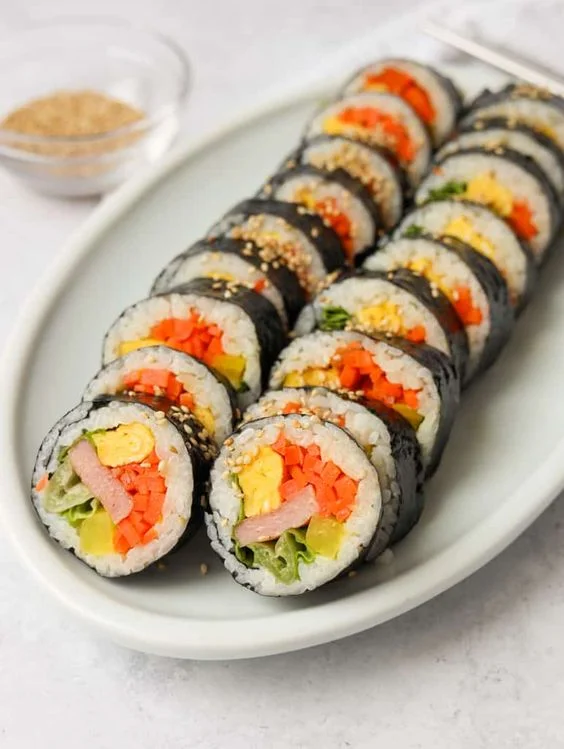
Koreans. It’s a staple in Korean breakfasts and a popular choice for outdoor events like picnics and sports days. The memories of mothers packing gimbap for such occasions are something every Korean can relate to. It’s considered a soul food that resonates deeply with the local culture.
Gimbap is not only cherished for its taste but also for its convenience. It’s a portable, non-fragrant snack that can be easily enjoyed on the go. Many office workers grab a quick bite of gimbap from subway stations or gimbap restaurants on their way to work.
While Seoul boasts numerous renowned gimbap eateries, I’d like to recommend one in particular.
📍Gimbap Heaven (김밥천국)
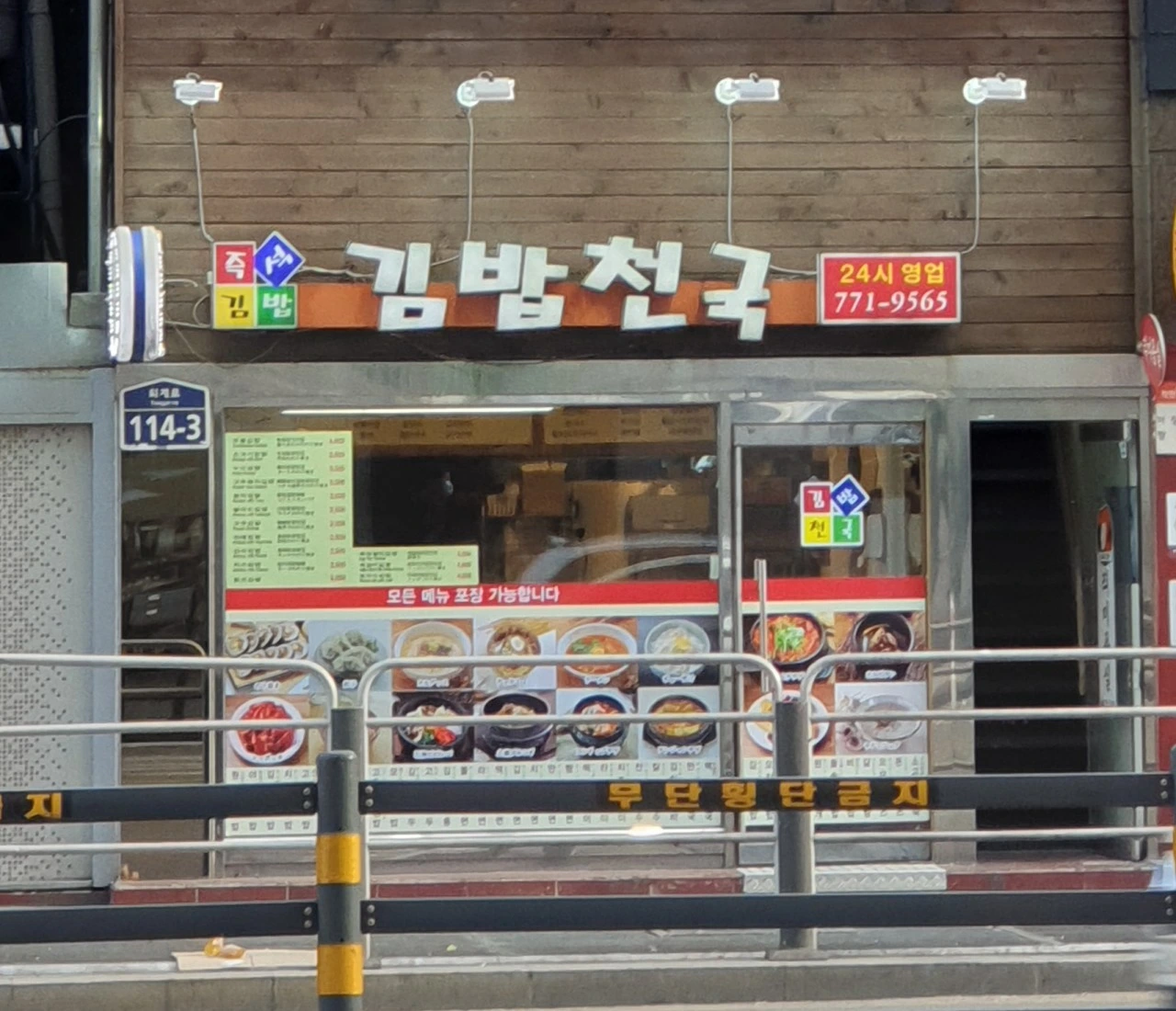
◆ Location and Operating Hours
🚩 Address: 114-3, Toegye-ro, Jung-gu, Seoul, Republic of Korea (Go to Google map)
(There are many chains all over the country. Search “김밥천국” on the map.)
⏰ Operating Hours: Everyday 24 hours
🤑 Price
- Vegetable Gimbap: 2,000 KRW
- Tuna Mayo Gimbap: 3,500 KRW
- Shrimp and Flying Fish Roe Gimbap: 4,500 KRW
4. Korean Toast
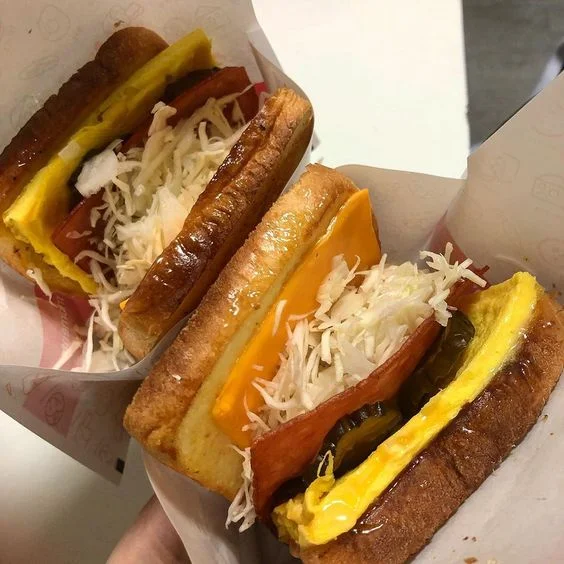
For a quick and satisfying breakfast, try Korean-style toast. Korean-style toast is known for its omelet, shredded cabbage, ketchup, and various sauces mixed together. It comes with a variety of fillings like bulgogi, chili shrimp, bacon, and more. Toast is also a famous street food in Korea, making it easy to find while walking around. Among the options, “Isaac Toast” is a well-known place that every Korean is familiar with. They have chains all over the country, so it’s recommended to try it as a light breakfast or snack during your travels.
📍Isaac Toast(이삭토스트)
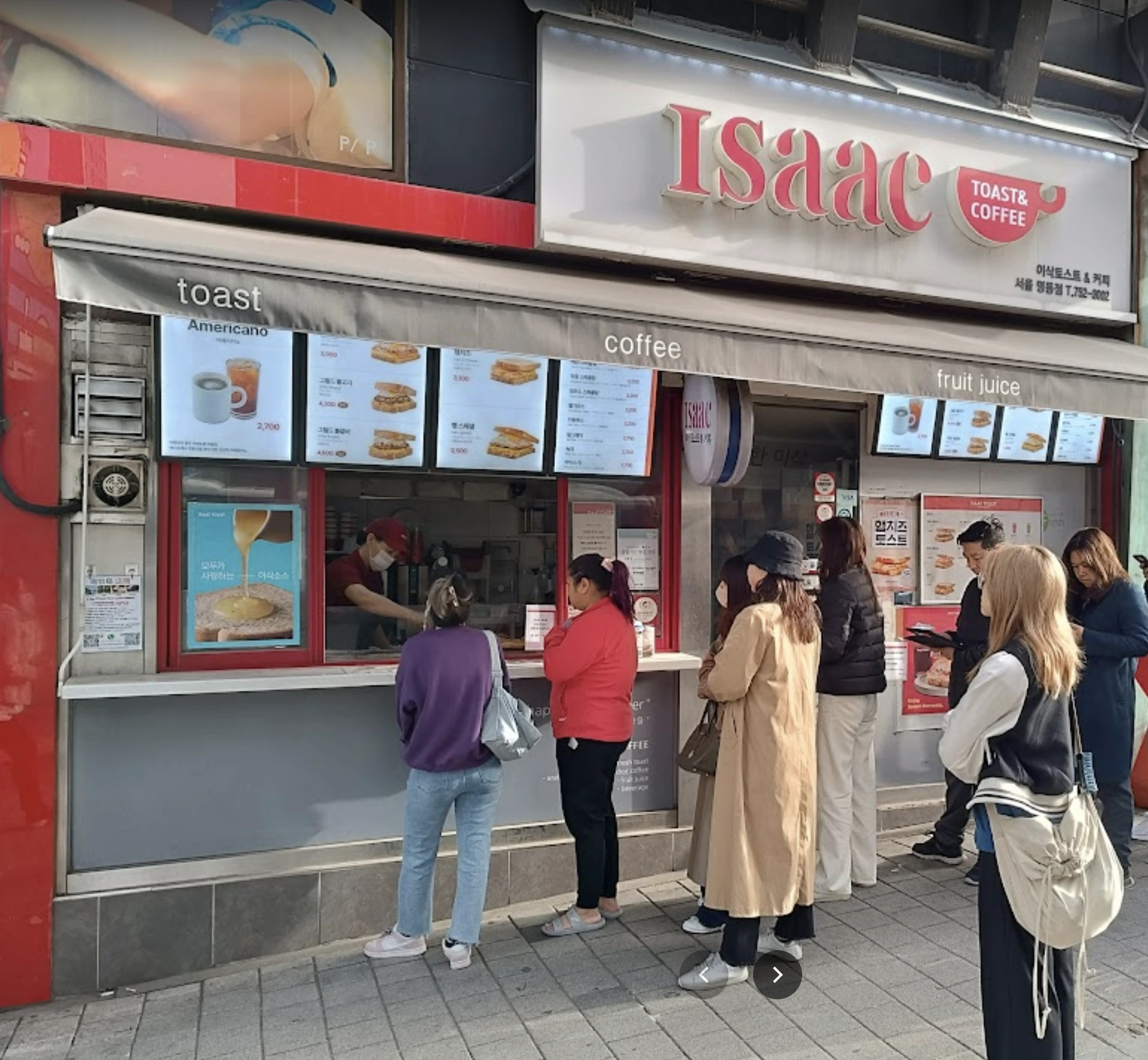
◆ Location and Operating Hours
🚩 Address: 105, Toegye-ro, Jung-gu, Seoul, Republic of Korea (Go to Google map)
(There are many chains all over the country. Search “Isaac Toast ” on the map.)
⏰ Operating Hours: Everyday 24 hours
🤑 Price
- Bulgogi Special Toast: 4,900 KRW
- Double Cheese Bulgogi Toast: 4,900 KRW
- Corn Cheese Toast: 4,300 KRW
- Honey Garlic Ham & Cheese Toast: 3,600 KRW
- Mozzarella Sweet Potato Toast: 4,500 KRW
- Grilled Bulgogi Toast: 4,600 KRW
- Grilled Beef Toast: 4,300 KRW
- Deep Cheese Bacon Potato Toast: 4,900 KRW
- Bacon Potato Pizza Toast: 5,100 KRW
- Deep Cheese Bacon Toast: 4,200 KRW
- Chili Shrimp Toast: 4,600 KRW
- Pizza Toast: 4,400 KRW
- Ham Special Toast: 3,500 KRW
5. Nurungji (Crispy Rice)
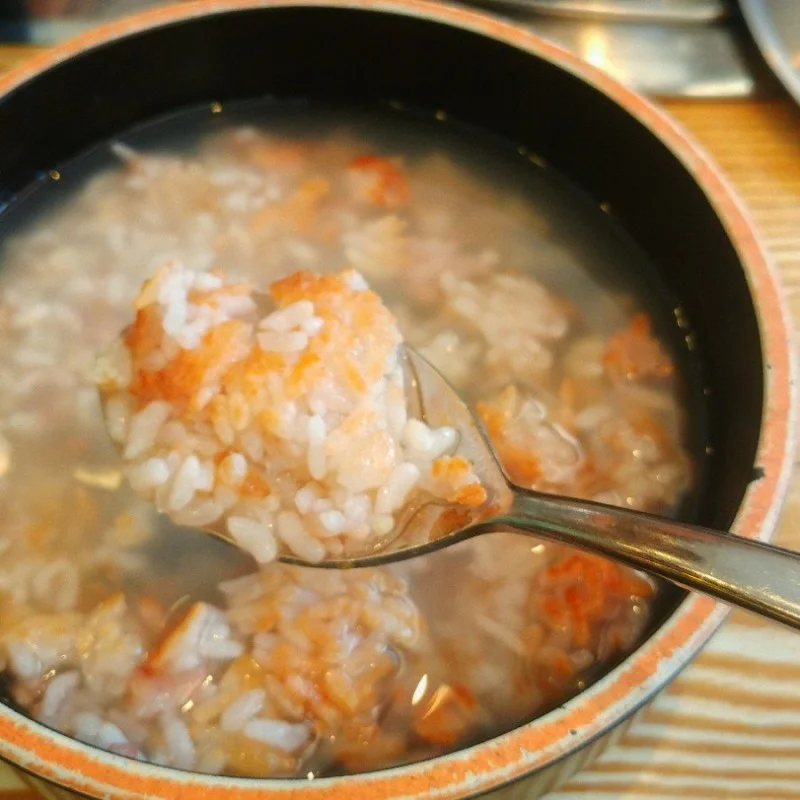
“누룽지,” which translates to “scorched rice” in Korean, refers to the crispy, crunchy layer of rice that sticks to the bottom of the pot after cooking rice. Koreans enjoy this by soaking it in water to make a delightful dish known as “nurungji tang.” It’s a quick, easy, and delicious meal that captures the essence of Korean cuisine.
Finding dedicated nurungji tang restaurants can be a bit challenging, so the best way to experience it is by dining at a “sotbap(솥밥)” restaurant. After enjoying a hearty meal of rice cooked in an iron pot (sot), the remaining scorched rice is soaked in hot water, creating a savory broth known as “sungnyung.” Koreans particularly savor this fragrant broth, which is sometimes called “sungnyung,” almost like a tea. If you’re a fan of Korean culture, trying this unique and flavorful dish is highly recommended during your visit to Korea!
Finish
I’ve just introduced 10 representative spicy Korean dishes. These are carefully selected as favorites among Koreans, but be warned, they can be quite spicy for foreigners! However, once you taste that spiciness, you might find yourself wanting to visit Korea again just to enjoy these dishes. You can try all the dishes I mentioned, especially if you come to Seoul. If you’re up for the challenge of Korean spiciness, you’re always welcome!
🔥Recommend🔥
Seoul Top 3 Ice-Cold Draft Beer Spots: A Local Guide to Indulgence
When Koreans think of a refreshing beverage for the summer, one thing comes to mind – ice-cold draft beer. It’s so cold that it might give you brain freeze, but it’s undoubtedly the coolest choice among all the beers I’ve tried.




0 Comments